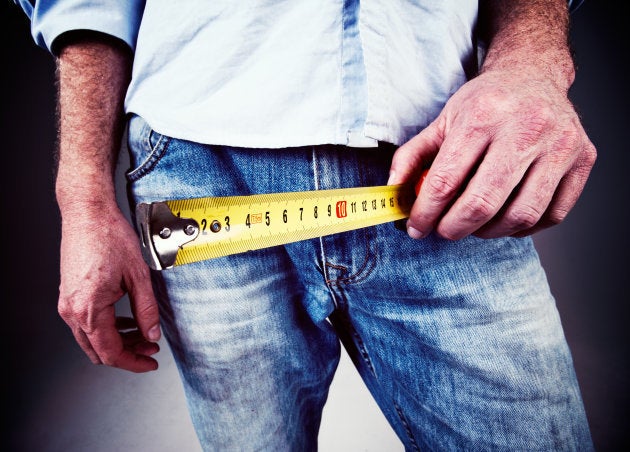
The stereotype holds that men who have penises spend a significant amount of time thinking about them, or thinking with them.
Of course, you can't think with a penis — it's got a head, but no brain. And men are capable of thinking beyond the whims of an organ that is pretty important, but not all-controlling.
That doesn't mean that penises aren't important, for sexual health and even, if something goes awry, for health in general. But does having a penis mean you know what is or is not "normal"? And what even counts as "normal" for something that can vary so significantly from person to person? On the other hand, when is something definitely abnormal and worth checking out?
Read on for some information — and probably a good amount of reassurance.
What is the average size?
As many as 45 per cent of men are unsatisfied with their penis size, according to one 2006 survey, and most of those men wanted theirs to be larger. But the average range penis sizes is actually pretty, ahem, big.
"There may be no such thing as a 'normal' penis, but there is such a thing as an 'average' one," Dr. Oliver Gralla, a men's health specialist and author of Happy Down Below, told HuffPost Canada via email.

A study from the British Journal of Urology International that looked at 15,000 men from around the world found that the average flaccid penis length was 9.16 centimetres (3.6 inches), and the average erect length was 13.12 centimetres (5.2 inches). For girth, the flaccid average was 9.31 centimetres (3.7 inches) and the erect average was 11.66 centimetres (4.6 inches). Length is measured along the top of the penis, from where the base connects to the torso to the tip.
What's more, the study found that outliers are pretty rare. Only five out of 100 men would have a penis longer than 16 centimetres (6.3 inches) erect, and only five out of 100 men would have one shorter than 10 centimetres (4 inches) erect. And research has shown that despite some stereotypes, age, race, and height are not accurate predictors of penis size.
So the myth of the superior penis is just that: a myth. Embrace humanity's natural variations!
Grower or shower?
It is normal to be a grower (what Dr. Gralla refers to as a blood penis) and not a shower (what he calls a flesh penis). But it's also normal to just be a shower.
The Journal of Urology study of 80 men found no correlation between size when flaccid versus erect, or between size and the age of the men. A Turkish study came to a similar conclusion.
What is a micropenis?
A micropenis is a penis that is well under the average size, about 2.5 standard deviations smaller than mean penis size — one standard is that the erect penis length is less than seven centimetres (2.7 inches).
The condition is rare, occurring in only about an estimated 0.6 per cent of those born with a penis, and there are several possible causes.
In some cases, micropenis can be treated in infancy with hormone injections, though this has no effect if the treatment begins in adults because penis growth stops after puberty. Surgery can also be an option in adults.
Partners are mostly fine with it
It turns out that the way men get to view their own penises — looking down from above — makes it look smaller, versus seeing it straight on or from the side. This may be why men seem more unsure about penis size than their partners do.
One study found that 85 per cent of women were satisfied with the size of their partner's penis, but 45 per cent of men believed their penis was small. Another study asked women to indicate their preferred penis with a 3D model, and the majority chose a size only slightly above average, just above six inches erect.
There doesn't seem to be much research on attitudes among same-sex partners about penis size, but one study did find that men who sleep with men were more likely to say they preferred to bottom during anal sex if they also rated their penis size as below average.
Men who rated their penis size as above average were more likely to say they preferred to top, while those who rated their size as average were more likely to say they were versatile on position.
But some things are abnormal
There are some things that are abnormal when it comes to penises, and if they show up they warrant medical attention because they can indicate a health issue.
Erectile dysfunction is an issue for many elderly men, but it doesn't affect them exclusively. "Although more common in older men, even teenagers can struggle with erection issues," Dr. Gralla said. In younger people, erectile dysfunction can be the result of a psychological issue, but it can also be the result of medical conditions like clinical depression or medication side effects.
There are other penile abnormalities or changes that can indicate a health issue. "Painful erections, palpable plaques, or slight deviations during erection can be the first signs of Peyronie's disease, or IPP (induratio penis plastica)," Dr. Gralla said.
The disorder should be treated as early as possible, so see a doctor if you develop those symptoms.
Also on HuffPost: